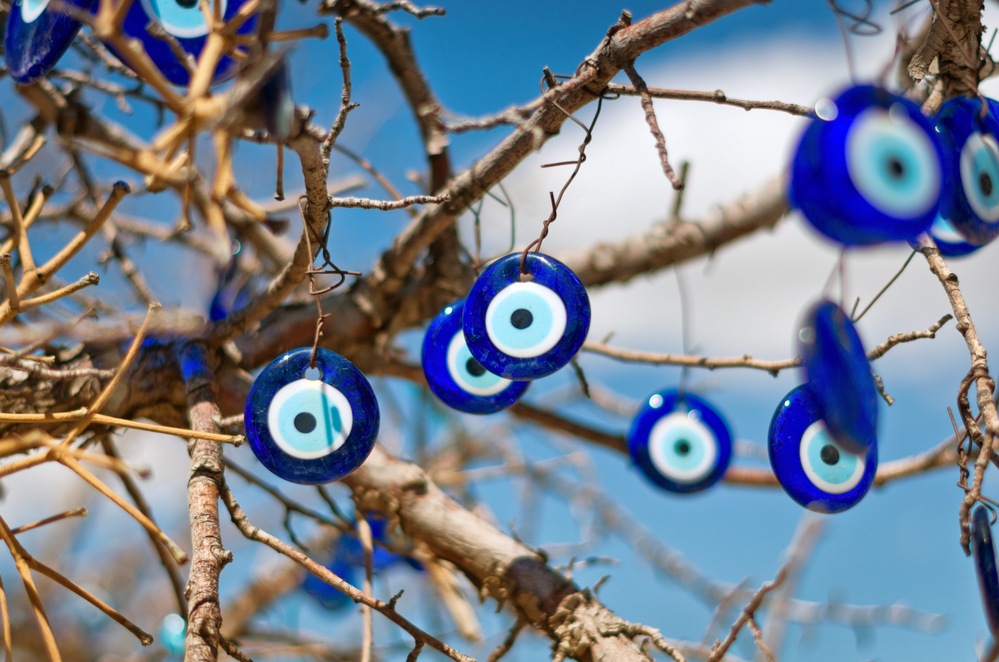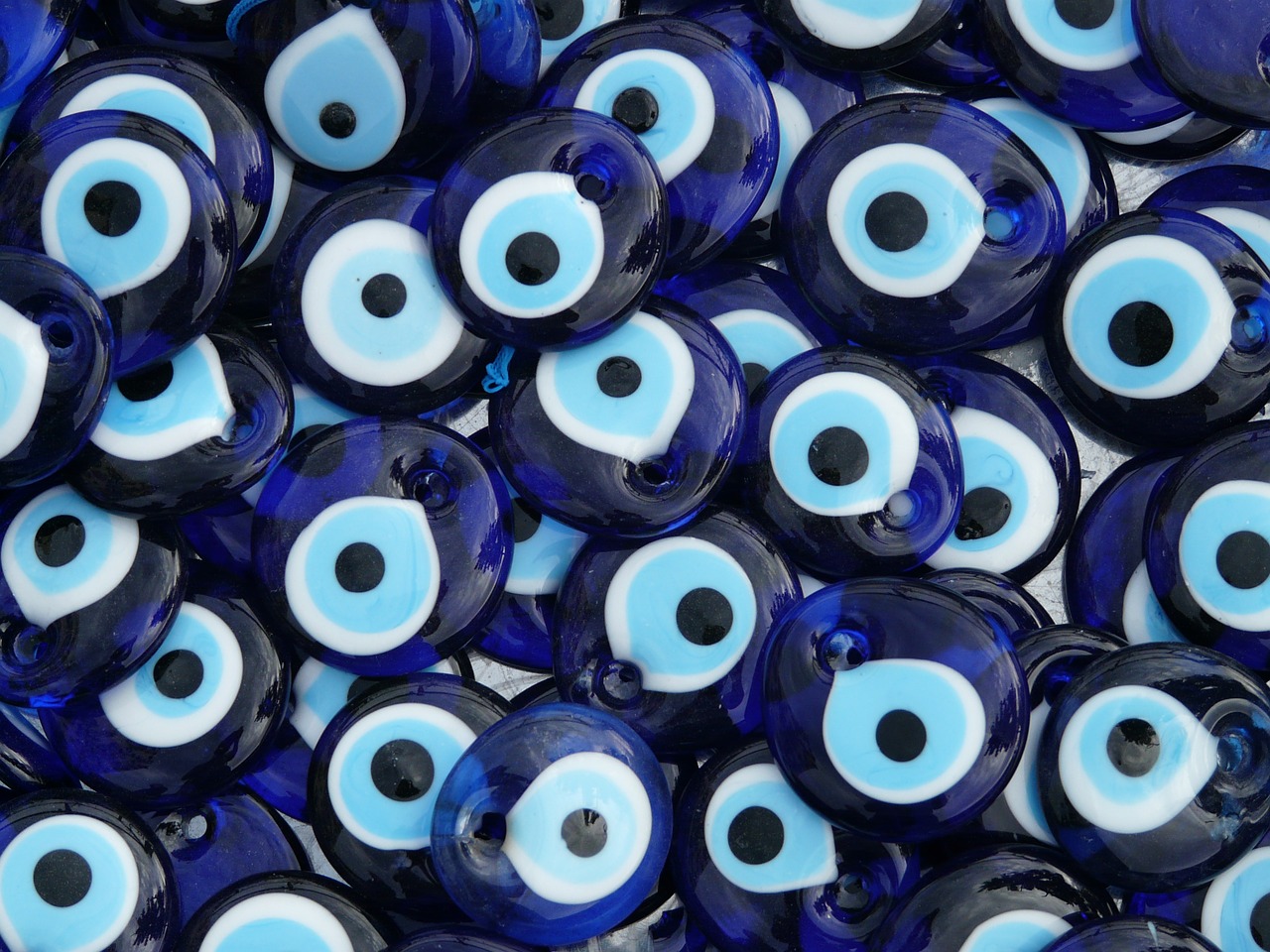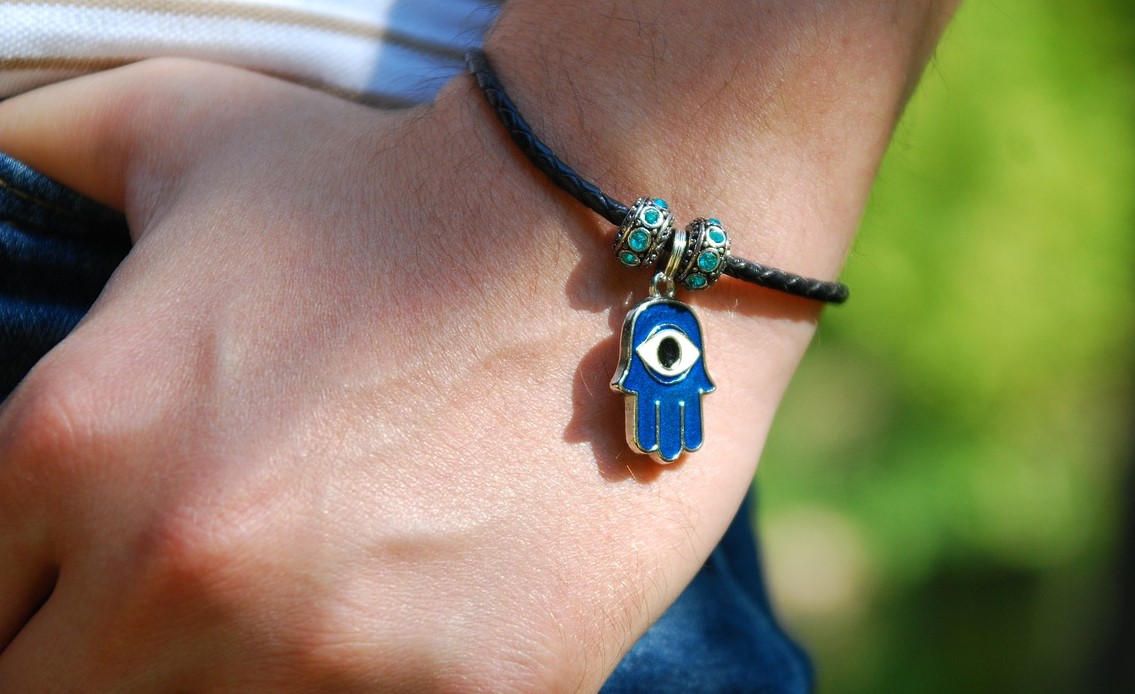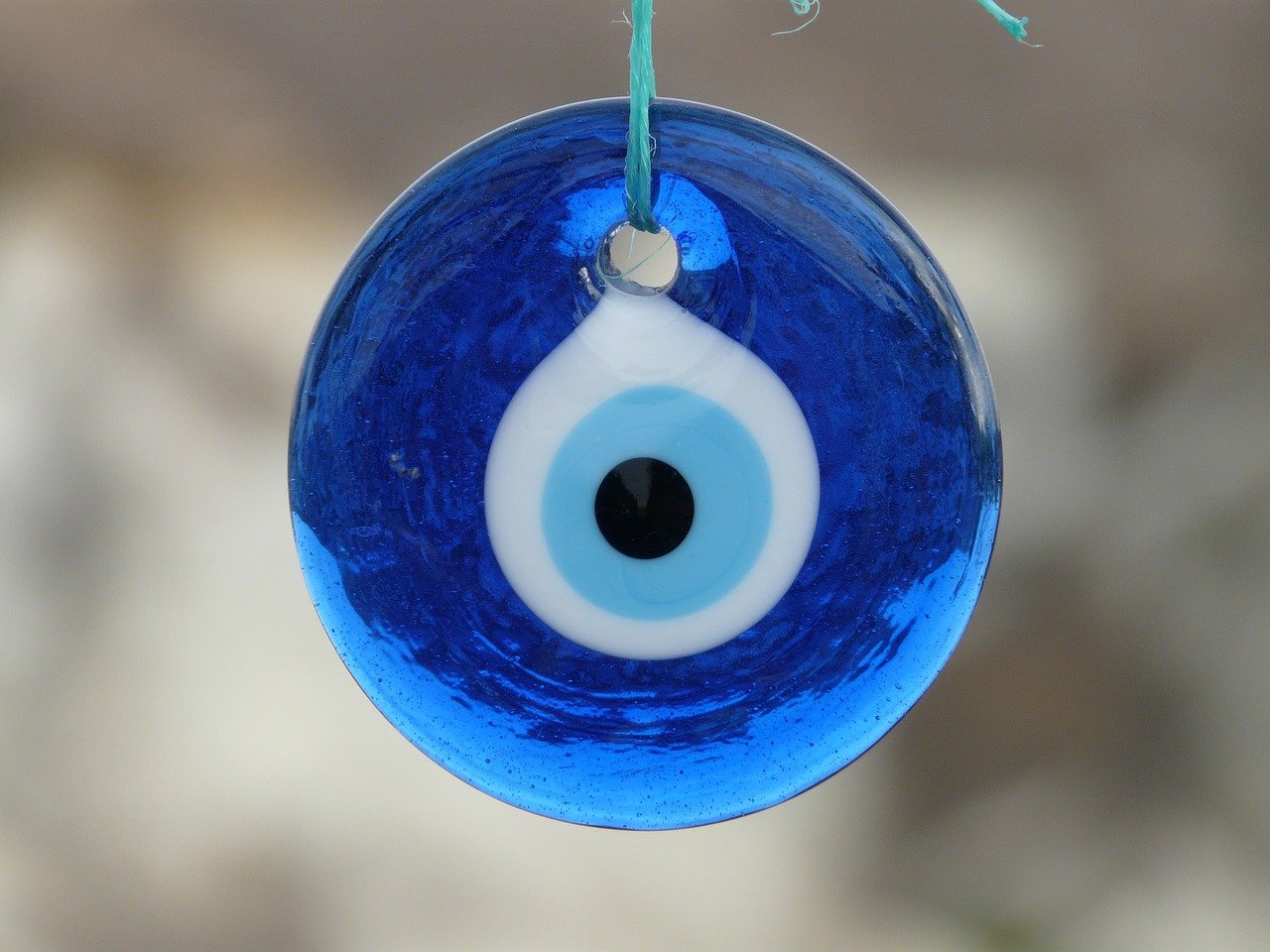If you find yourself unlucky in love, business or just day to day living, buy a blue evil eye in Turkey, also called a Nazar Boncuk. Said to ward off jealousy, envy, bad-luck, and misfortune, this time-honoured practice is the country’s most widely sold souvenir. Most of us are superstitious even if we don’t realise it. Simple everyday sayings like good luck refer to a higher power making our desires in life come true. Older concepts such as Friday the 13th and crossing the path of a black cat are just the same.
So, first-time visitors in Turkey would do well to learn about these talismans, whether you believe in bad energy or not because they feature a lot in society. Appearing as a bright or dark-blue circle or oval shape with smaller middle circles to portray an eye, hence its name. It comes in many forms including plates, necklaces, bracelets, hanging ornaments and key-rings. As well as being a popular souvenir, many Turks place it in cars, homes, offices or even wear it as a collar badge.

The Blue Evil Eye in Turkey
Nazar Boncuk Meaning
Don’t assume the blue evil eye charm is just a popular marketing concept. Its origins stretch back over a long historical timeline, and strong folklore beliefs exist regarding the Nazar Boncugu in Turkish daily life. Like a talisman or amulet, you will also see the blue eye in Greece, and a few Middle East countries. Turkish people believe the Blue Evil Eye absorbs bad energy, therefore gives the wearer protection. If evil spirits are abolished or broken, the eye protection will crack, signalling the danger is over.
Negative energy mostly stems from other people. For example, a jealous friend at your engagement, or a colleague, is upset because you earn more money than he does. The eye symbol is the perfect gift at births, weddings, purchase of a new home in Turkey, car or start of a new business and some Turks take the concept seriously while some question the belief but still use the Nazar Boncugu anyway. The wearer is probably hedging their bets!

Different Cultures and Beliefs
As well as existing in Turkey, it features in other cultures, and the first recorded use was found on clay tablets dating back 5,000 years to the era of ancient Mesopotamia. Some articles suggest its origins date from Medusa’s evil eyes. After Peruses killed Medusa and chopped off her head full of snakes, he continued to show the head to enemies, who would inevitability look at it and turn to stone. Some people who believe in Zodiac symbols sometimes cite certain star signs as having more physic energy, and therefore people around them should use the eye.
It also closely resembles the Hamsa hand of Judaism, otherwise the hand of God. Hebrew in Hebrew means five, which some believe refers to the Torah’s five books. In Islam, they call the Hamsa, the Hand of Fatima, the prophet Muhammad’s daughter who was without sin, therefore pure of heart. Buddhism and Hindu followers believe in Hamsa but as a representation of the Chakra energy system. Followers of ancient pagan rituals believe the eye prevents bad energy, passing from one person to another. The similar Eye of Horus appears in ancient Egyptian culture. Although slightly different, all versions symbolise protection against bad energy.

Blue Evil Eye Craftsmen in Turkey
Much like any trade, a specific area boasts of experts due to the high quality of handmade artisanship. Known as Cesmi-i Bulbul, the art of crafting glass into evil blue eyes is particularly renowned in the Aegean Izmir region of Turkey, especially the Gorece and Kurudere villages. Artisans sit in front of a sizeable burning furnace and using a large rod, soften the glass strength then mould it into the desired shape. Colours are added by using the oxide of various metals. Each artisan has his handcrafted method and unique colours, usually handed down through his Turkish family generations.
Why Use the Colour Blue?
Again, lots of stories explain the colour blue, although none are confirmed. A typical story is the sky is blue, and this is the signal of a new and bright day. Another tale from Middle Eastern countries is people with blue eyes (a rare occurrence) have extreme powers, and either consciously or subconsciously inflict evil energy onto others. These days, innovative artisans include alternative colours like an eye-catching turquoise, a deep sapphire blue, especially for jewellery, and sometimes even yellow or green.
Buying the Evil Eye as a Souvenir
So, if you want the Nazar Boncuk to ward off bad energy, everywhere in Turkey sells it, from airport lounges to souvenir stalls and local shops. The best part is thanks to its wide availability, low prices mean you can invest in an evil blue eye to keep yourself free from destructive and harmful energy. Jewellery forms include dainty lucky charms, bracelets, necklaces, Pendants, tespi beads, earrings, cuff links, bangles, and anklets. More souvenir includes wall-hanging decoration, braided tassel ornaments, stationarity, and keychains. It is a nice gesture to give to loved ones, both friends and family.

Also Read
Turkish Superstitions: The Blue evil eye in Turkey, is not the only superstition. In everyday life, you will come across more beliefs that although younger generations laugh at, were adhered to for many years with the older. In this article, we look at the most common you might encounter on a visit here.
Turkish Kitchen Culture: Turks love their food. It is a time-honoured tradition for the family to get together and enjoy a meal with treasured company. Hence certain cultural beliefs stem around food and eating, and we talk about what to know when getting in the Turkish kitchen.





